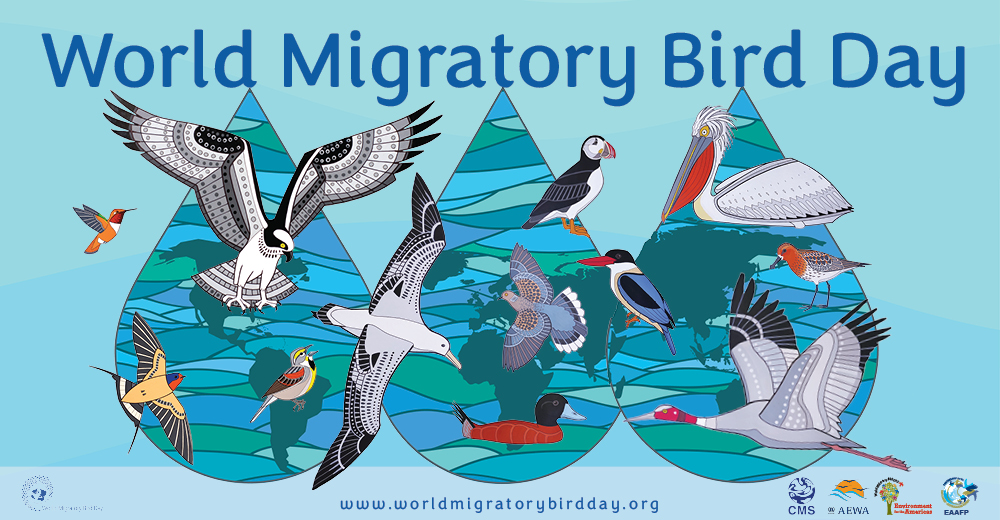Whales are aquatic mammals belonging to the order Cetacea. The term ‘whale’ can be used in reference to any cetacean, including porpoises and dolphins, but in general it is applied to those more than 3 metres (10 feet) long.
Pravasi samwad.com
Imagine a creature as big as a 10-storey building that inhabits Planet Earth and weighs as much as 2 tonnes. It’s possible that many people’s thoughts might stray in the direction of dinosaurs. But those giant reptiles actually became extinct millions of years earlier. Interestingly, a noteworthy fact is that this marine mammal is far bigger in size than any of the dinosaurs, according to experts. And perhaps most people may have already guessed by now that we’re taking about whales.
On February 19, the world observes World Whale Day, to raise awareness of these magnificent creatures, for their beauty as well as their ecological value to the planet.
Whales are aquatic mammals belonging to the order Cetacea. The term ‘whale’ can be used in reference to any cetacean, including porpoises and dolphins, but in general it is applied to those more than 3 metres (10 feet) long.
Did you know that the massive Blue whale’s heart that weighs 400 pounds (181.437 Kilos), is about the size of a golf kart or go-kart and pumps 220 litres of blood every10 seconds, through its body, But that’s not all. It beats so loudly that it can be heard 3km away with the help of sonar equipment.
World Whale Day, was first celebrated in Maui, Hawaii in 1980 to honour Humpback Whales. Pacific Whale Foundation founder Greg Kauffman thought it would be a perfect way to raise awareness about the extinction threat these behemoths of the oceans face.
The most endangered whale species right now is the North Atlantic Right Whale, with less than 400 individuals remaining
But Whale Day isn’t just about humpbacks that frequent the waters around the tropical island of Hawaii. Whales can be found across all of the earth’s oceans and these oceans are today heavily polluted, contaminated and dangerously degraded.
Ocean life is disrupted due to the irresponsible manner in which man discards waste into our water bodies.Toxic pollutants such as chemicals, oil spills, plastic litter and industrial waste, rampant across all oceans on earth are a threat to the whale populations of today and the future.
Over the years, climate change and the irresponsible disposal of wastes and toxins in water bodies, we have polluted the marine environment. This directly affects the creatures lying in the deep blue world.
What if whales were to become extinct? The situation had almost come to that at one point of time. Indiscriminate whaling and large-scale slaughter of whales for commercial purposes between the 16th and the 20th century, has brought about a drastic drop in whale populations worldwide.
If not for whaling, the animals might have removed two million tonnes of carbon from the Earth’s atmosphere. Sperm whales fight climate change without even trying, and if the whale population declined to nil, there would be far too much carbon in the atmosphere.
.Whales have always been hunted on a small scale for their meat, blubber and oil, but during this time the industry expands and begins using explosives in a cruel manner.
It became clear as a result in the late 1960s that certain species of whales were facing a grave survival threat. Many governments began to take note of it and the International Convention for the Regulation of Whaling in 1970 was the first significant step for regulatory action.
The following year a serious drop in the population of blue whales led to the species being declared officially endangered through the Endangered Species Conservation Act, the predecessor of the Endangered Species Act (ESCA).
However, in spite of all this, American writer Herman Melville’s ‘Moby Dick’, the story of the Great white whale, still remains a literary icon and a classic gem of fiction writing, with all the ingredients of high drama, danger and adventure on the high seas.
Published in 1851 and regarded as the writer’s magnum opus, the story vividly brings to life the obsession, almost to the point of an all-consuming madness, of the one-legged Capt Ahab (the book’s main protagonist) and his tribal companion Queequeg aboard the whaling vessel, Pequod. They, together with the ship’s crew are on a do-or-die mission to hunt and kill Moby Dick, a great, white sperm whale.
Melville based the character of the whale on an actual albino whale of that time named Mocha Dick, often found off the coast of Chile in the Pacific Ocean, near Mocha Island. The whale lived during the early 19th century and became a legend among whalers.
A 1956 film adaptation of Melvilles’s novel with the same title (Moby Dick), was released in 1956 with Gregory Peck playing the lead role of Capt Ahab. It was directed by John Huston with a screenplay by Huston and Ray Bradbury.
Two categories
Whales have two categories: toothed whales and baleen whales. Instead of teeth, baleen whales have fibrous plates in their mouths that help them filter out sea items such as plankton, krill, and crustaceans. Toothed whales can feed on larger prey such as squid or fish.
Some interesting facts about whales
Whales are social, air breathing mammals, they feed their babies with their own milk, and they take extraordinarily good care of their young and teach them life skills.
Many believe whales are special. There is something almost other-worldly about them. Whales enrich the lives of many people who come into contact with them. They are unique, beautiful, graceful and mysterious; they nurture, bond, play, sing and cooperate with one another
1. Do whales eat humans?
Despite some reports of whales taking people into their mouths, it is rare and physically impossible for them to swallow a human.
2. Sleeping patterns: While whales do shut their bodies down, only half their mind stays at rest.
3.Perfumes: Traditionally, whale vomit known as ambergisis used in the making of perfumes.
4. Whale’s blowhole: A whale’s blowhole does not shoot out seawater.
5. Whale milk: The texture and consistency of a whale’s milk is like toothpaste.
6. Whales are singers: Humpback whales are known to sing complex songs. A whale song is a long, patterned sequence of sounds. Blue whales, fin whales, bowhead whales, minke whales, sperm whales and humpback whales all sing. Humpback whale songs have even appeared in the album charts.
Male humpback whales are the best-known singers; their songs are beautiful, complex and ever-evolving. Their songs can last for up to 30 minutes and feature various themes sung in a sequence that is common to all males in the same breeding area that year.
During the winter mating season, they repeat their songs over and over for hours at a time and gradually change them as the breeding season progresses. Each year a new song is produced.
However, in spite of all this, American writer Herman Melville’s ‘Moby Dick’, the story of the Great White Whale, still remains a literary icon and a classic gem of fiction writing, with all the ingredients of high drama, danger and adventure on the high seas.
Scientists have found that blue whales can sing for days and have found 11 different song types around the world that may correspond to distinct populations of blue whales.
They have also found that blue whales migrate over large distances and produce songs throughout the year, at their tropical breeding grounds, during migration, and on their feeding grounds.
7. Bowhead whales can live over 200 years
8. A sperm Whale’s brain weighs 9 kg. The volume of their brain is 8000 cubic centimetres, five times more than the volume of the human brain.
9. Whales are extremely intelligent and are believed to experience a variety of feelings, similar to those of humans.
10. Many different species of whales communicate with each other by using sounds and even songs within their communities.
11. The Antarctic blue whale is the largest animal on the planet, weighing up to 200 tons (approximately 33 elephants) and reaching up to 30 metres in length. They can consume about 3,600kg of krill a day!
12. Humpback whales only eat for a small part of the year. Their fat stores keep them healthy for around 6-7 months while they are in the process of migrating to the Antarctic from their tropical breeding areas.
The whale with the biggest teeth
Toothed whales (and dolphins and porpoises) all have teeth – the number, size and position of their teeth varies from species to species. They hunt mainly fish, squid and octopus using their sophisticated sonar systems – echolocation – to find and target their prey.
Male narwhals grow one canine tooth, or tusk, which sticks straight out of their mouths and grows up to 3m (9ft) long The narwhal’s sword-like tusk grows in a counter clockwise spiral and pokes right through the upper left-hand side of the mouth.. Very rarely do female narwhals will grow a tusk Ironically inside their mouths, narwhals do not have any teeth at all!
The biggest whale with teeth is the sperm whale. They have 40 to 52 cone-shaped teeth, up to10 to 20cm (4 to 8in) long, in their narrow lower jaws only. Each tooth is heavy and weighs as much as one kilogramme
**************************************************************
Readers
These are extraordinary times. All of us have to rely on high-impact, trustworthy journalism. And this is especially true of the Indian Diaspora. Members of the Indian community overseas cannot be fed with inaccurate news.
Pravasi Samwad is a venture that has no shareholders. It is the result of an impassioned initiative of a handful of Indian journalists spread around the world. We have taken the small step forward with the pledge to provide news with accuracy, free from political and commercial influence. Our aim is to keep you, our readers, informed about developments at ‘home’ and across the world that affect you.
Please help us to keep our journalism independent and free.
In these difficult times, to run a news website requires finances. While every contribution, big or small, will makes a difference, we request our readers to put us in touch with advertisers worldwide. It will be a great help.
For more information: pravasisamwad00@gmail.com











